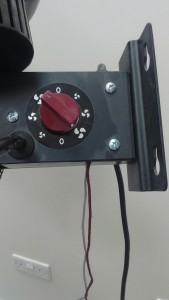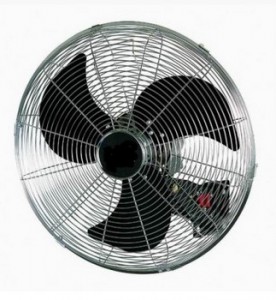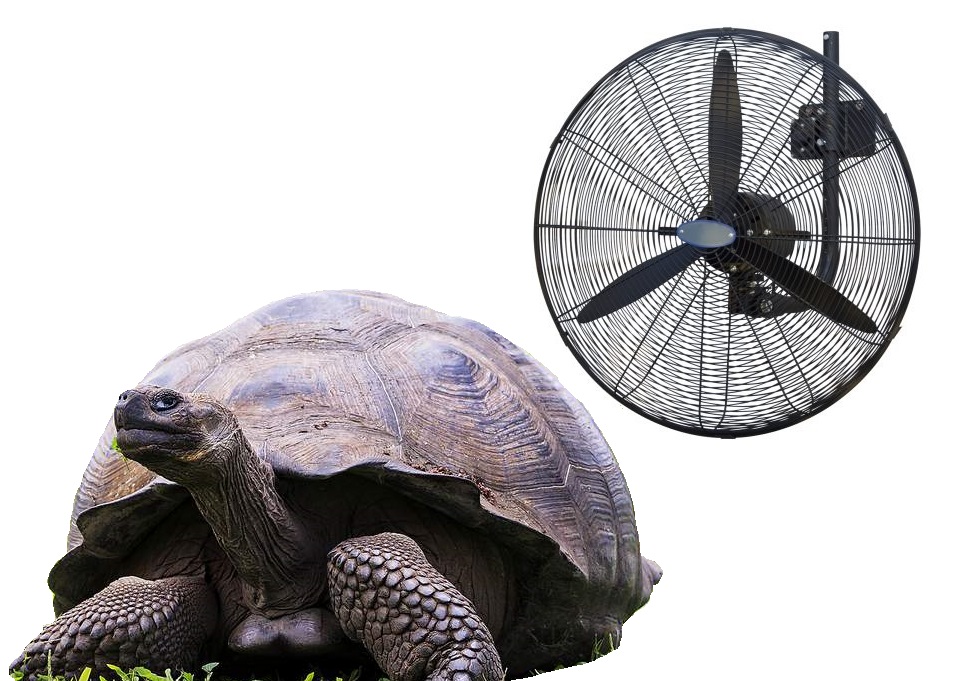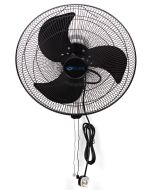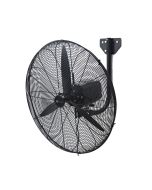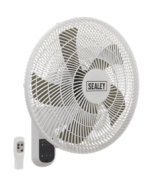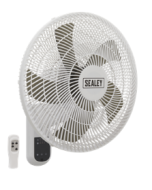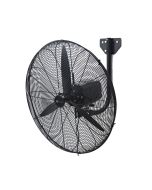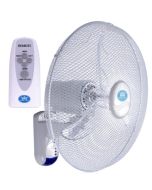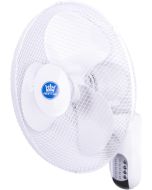- Heaters (38)
- Ventilation (6)
- Cooling (28)
- Dehumidifiers (7)
- Air Purifiers & Cleaners (26)
- Fans (21)
- Air Curtains (2)
Wall Mounted Fan Guide

Wall Mounted Fans and its Application
There is a world of difference between the wall mounted oscillating fans that you might come across for domestic use and the type of wall mounted fans that are available for commercial use.
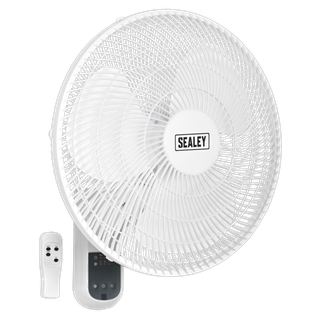
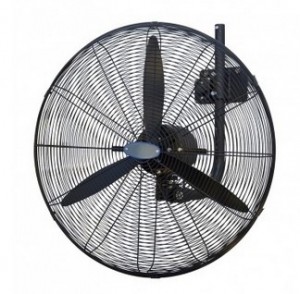
A domestic wall mounted fan will typically be 12" Ø, made of plastic or lightweight metal with a chrome finish and have a remote control. Not the sort of kit that is much use in a commercial application where something altogether larger and more robust is called for.
So if domestic fans are too small and puny, what kind of wall mounted fan do you need for those commercial and industrial applications?
Consider...
| Fan Size | Occupied rooms in commercial buildings are typically quite large and a wall mounted fan in such a setting needs to be correspondingly large in order to move sufficient air around the room to get cooling effect. Generally any fan less than 18" Ø will be too small for commercial applications and you may need to use a larger fan, possibly as large as 30"Ø |
| Oscillation | Although in most applications you need your wall mounted fan to oscillate, it is also very useful to be able to set the fan in a particular direction. On good fans this is easy - let it oscillate until it reaches the point in its travel where you want it to point and disengage the oscillation function. |
| Fan Speeds | Look for at least 3 fan speeds. With increased speed comes increased noise. On the hottest days you may be prepared to tolerate the extra noise and air flow to get the desired cooling effect, however it is good to be able to turn it down to just enough, when it's not so warm. |
Controls | Remote controls ... bad idea. In work places remote controls are almost certainly going to get lost and get flat batteries.We recommend that the controls are on-board the fan, and ideally supplemented with pull cords. Pull cords or chains to operate the controls are useful because it means that the strings hang down lower than the fan itself meaning that it can be within reach from floor level even if the fan itself is not.Look for the controls themselves to be robust and have a positive clunky feel. Cheap ones break!There should be 2 pull cords which will give you control of on/off, fan speed and oscillation function |
| Build Quality | The fan should have a bit of weight to it and feel solid. If fan 'A' is 20"Ø and weighs say 4kg but fan 'B' also is 20" Ø and is 8kg, then its easy. The heaviest fan 'B' is the most robust and the one to go for. Ideally go for metal cased motors, and metal protective cage round the fan blades. The fan blades themselves are actually better being in moulded plastic rather than metal because this means they are less prone to damage and if impacted tend to spring back to their previous shape. |
| Fixing to Wall | A good wall mounted fan should have a heavy-duty fixing plate with at least 4 points for screw fixing. This is important because the complete weight of the fan goes through the plate to the wall so it need to be tough enough not to flex under the weight of the fan and motor even if it gets knocked, |
| Pitch Setting | A wall mounted fan needs to have the ability to have its angle of operation set, so that you can set it to point for horizontal discharge, or say, set it to a lower angle so that the air flow is discharged downwards at an angle. |
Needless to say the Puravent wall mounted range does all this and more...
Puravent's Range of Wall Mounted Fans
Articles related to this product
-
Misting fans are a unique and innovative product in the fan industry. They're specially designed to disperse small particles of water over a large distance.08/05/18
-
Industrial wall mounted fans are a great solution for regulating the temperature in commercial buildings, with various sizes and features. Find out more.19/04/21
-
Oscillating wall fans from Cyclone are one of our most popular and versatile air movement products. They are even a hit with Galapagos Tortoises!19/04/21

